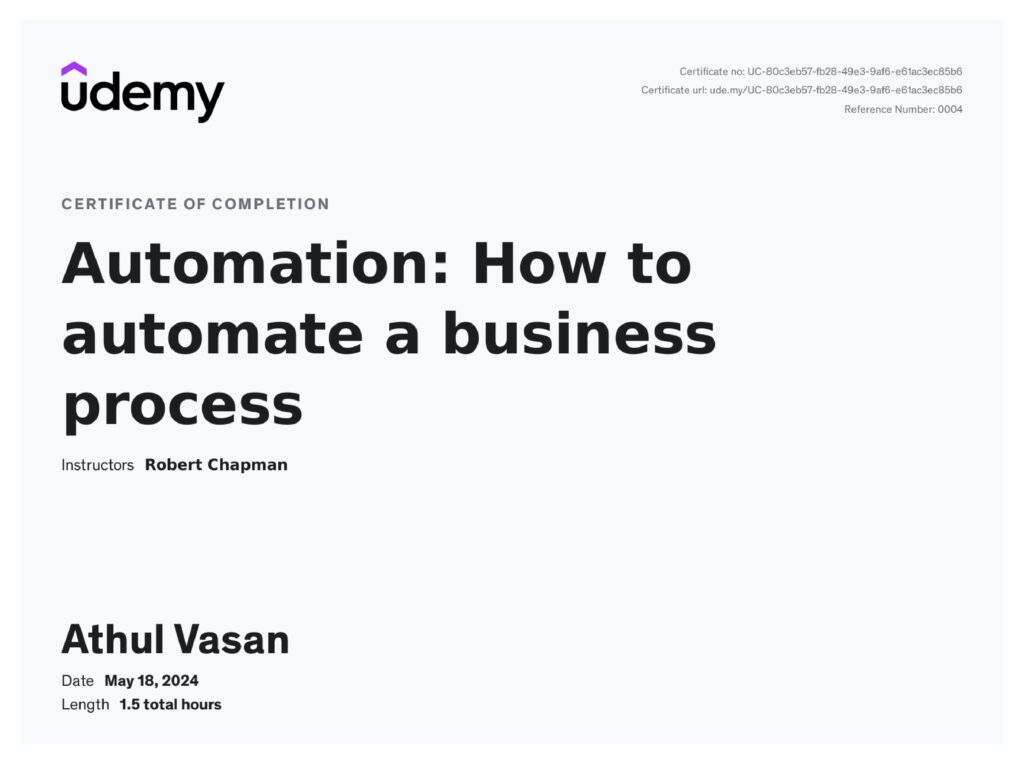Loading...
Skip to content
Promotion Budget Approval Automation – Lulu Group (2025)
-
- Digitally replaced the paper based manual happiness budget approval process using Power Automate
-
- The automation streamlined the budget approval process, reducing the time frame for budget approvals and also making it easy to approve from anywhere.
Certificates
 Certification on “Automating Business Process
Certification on “Automating Business Process